 This World Is Not Yours by Kemi Ashing-Giwa
This World Is Not Yours by Kemi Ashing-Giwa Format: eARC
Source: supplied by publisher via Edelweiss
Formats available: paperback, ebook, audiobook
Genres: horror, science fantasy
Pages: 176
Published by Tor Nightfire on September 10, 2024
Purchasing Info: Author's Website, Publisher's Website, Amazon, Barnes & Noble, Kobo, Bookshop.org, Better World Books
Goodreads
This World is Not Yours by USA Today bestseller Kemi Ashing-Giwa is the perfect blend of S.A. Barnes' space horror and Cassandra Khaw's beautiful but macabre worlds. An action-packed, inventive novella about a toxic polycule consumed by jealousy and their attempts to survive on a hostile planet.
After fleeing her controlling and murderous family with her fiancée Vinh, Amara embarks on a colonization project, New Belaforme, along with her childhood friend, Jesse.
The planet, beautiful and lethal, produces the Gray, a “self-cleaning” mechanism that New Belaforme’s scientists are certain only attacks invasive organisms, consuming them. Humans have been careful to do nothing to call attention to themselves until a rival colony wakes the Gray.
As Amara, Vinh, and Jesse work to carve out a new life together, each is haunted by past betrayals that surface, expounded by the need to survive the rival colony and the planet itself.
There’s more than one way to be eaten alive.
My Review:
This one seemingly begins in the middle, and it kind of does, but also kind of doesn’t. Yes, that’s a bit cryptic but sometimes so is this story – in a good, creepy and utterly chilling way.
The chapter numbers count down and not up, and it’s a countdown. I knew from the beginning it wasn’t counting down to anything good, as that first chapter makes it seem like the situation has already gone to hell in a handcart. The second chapter initially made it seem as if the story might be counting backwards, as the people who definitely broke apart in that first chapter are together – or back together – in the second.
It’s only as I read further that I figured out that the chapter numbers were a countdown to something terrible that hadn’t yet happened. As though a bomb was going to explode when the count reached zero – which it sorta/kinda did, but not in the way that I was expecting.
So consider that countdown a shadow of things to come, that whatever it’s counting down towards is going to be destruction, or annihilation, or both. Definitely both.
There’s a saying that “Mother Nature always bats last, and she always bats 1.000.” On the colony world of New Belaforme, it’s at least her third time at bat, and this time she has actual hands to hold that otherwise metaphorical weapon.
And this time around she’s aiming past the metaphorical bleachers all the way around the world and out into the stars.
Escape Rating A-: There are multiple ways to approach this story, just as there are multiple ways that it approaches its ultimate designation as SF horror. Expect to be increasingly creeped out as the story creeps its way into that ending.
But in the beginning, it’s the story of a triad relationship that’s teetering on the edge of self-destruction before it gets tipped all the way over into utter annihilation. Jesse, Vinh and Amara absolutely do love each other, but it’s not a good or healthy kind of love because it’s riddled with lies. Lots and lots of lies.
All of which are based on each thinking they’re not “good” enough for the others – although each has very different definitions of good. They’re all putting up a front, they’re all pretending that everything is hunky-dory, that Jesse is their best friend and Vinh and Amara have a happy marriage – in spite of Amara’s family’s violent disapproval of her marriage to a woman who has no money, no connections and seemingly no prospects.
They cling to each other because none of them have anyone else, and they cling to their still-struggling colony planet because they think they can make a go of it out of the reach of Amara’s family’s vast influence.
It all works, barely, until their colony is invaded by their on-planet rivals, and the resulting rules and restrictions claimed to be necessary for survival and success tear their little world apart by adding an additional player to their game.
And in those myriad upsets of their own private status quo, the planet steps in and uses them for its own purposes. Because it’s had just about enough of its human pests and it’s time to start over. Again.
I have to admit that I was expecting to discover that Amara’s family were actually the “big bad” in this scenario, that they had engineered the invasion in the expectation that their wayward child would return to the suffocating family fold. It’s not like that story hasn’t been told before, after all.
 Instead, this is a story where this planet’s equivalent of Gaia manifests as an actual persona, and she has a mission and an agenda to keep the planet in ecological balance at ALL costs. Once she’s decided that the humans are incapable of being anything other than what they are – greedy and rapacious – well, a planet’s gotta do what a planet’s gotta do.
Instead, this is a story where this planet’s equivalent of Gaia manifests as an actual persona, and she has a mission and an agenda to keep the planet in ecological balance at ALL costs. Once she’s decided that the humans are incapable of being anything other than what they are – greedy and rapacious – well, a planet’s gotta do what a planet’s gotta do.
Which is where the horror comes in. It’s very much the SFnal kind of horror, like S.A. Barnes’ Dead Silence and Ghost Station, or Ness Brown’s The Scourge Between Stars, but because this is set on a planet and not in the black of space, the results are different, but just as chilling because the planet gets a say in who she’ll allow to live on her and humans have just not made the cut. And that’s where the horror intersects a bit with the weird and eldritch worlds that Cassandra Khaw plays with our minds in.
Consider this compelling story in the scary borderland between SF horror and fantasy horror, between magical realism and spaceships consumed by monsters out of the black and make sure you read it with the lights on.
But if you had a good, creepy, chilling reading time with any of the above, This World Is Not Yours will creep you right out in the very best way..

 Crypt of the Moon Spider (Lunar Gothic Trilogy, #1) by
Crypt of the Moon Spider (Lunar Gothic Trilogy, #1) by  The SFnal aspects of the story were enough to carry me over – or perhaps through – the horror aspects of the thing, except for the image of Veronica left in my mind at the end. For anyone who has ever played
The SFnal aspects of the story were enough to carry me over – or perhaps through – the horror aspects of the thing, except for the image of Veronica left in my mind at the end. For anyone who has ever played 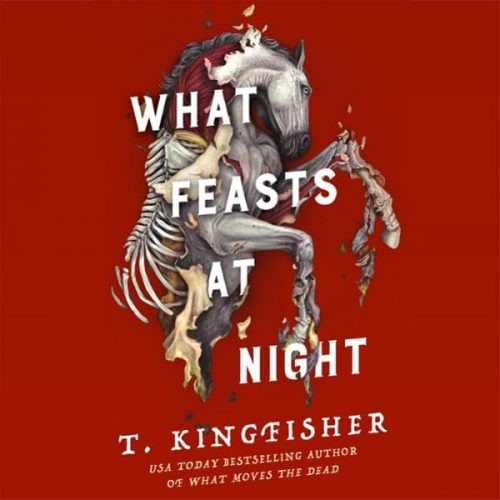 What Feasts at Night (Sworn Soldier, #2) by
What Feasts at Night (Sworn Soldier, #2) by 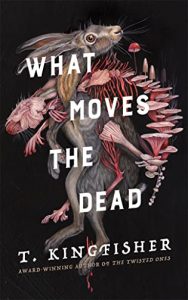 Escape Rating A-: I’m not sure whether to say that What Feasts at Night isn’t quite as creepy as
Escape Rating A-: I’m not sure whether to say that What Feasts at Night isn’t quite as creepy as 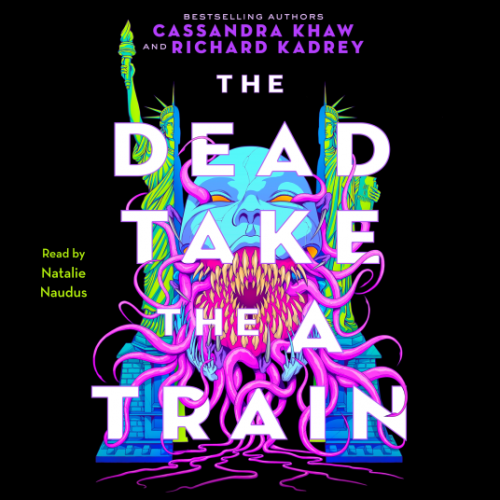 The Dead Take the A Train (Carrion City, #1) by
The Dead Take the A Train (Carrion City, #1) by 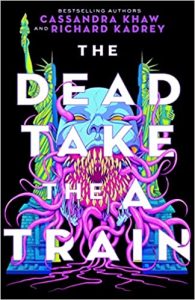 Escape Rating B+: First and most importantly, this is your trigger warning that The Dead Take the A Train is a bloody, gory, gruesome reminder that urban fantasy as a genre is the uncanny child of mystery and horror, much like the uncanny babies being born in yesterday’s book,
Escape Rating B+: First and most importantly, this is your trigger warning that The Dead Take the A Train is a bloody, gory, gruesome reminder that urban fantasy as a genre is the uncanny child of mystery and horror, much like the uncanny babies being born in yesterday’s book, 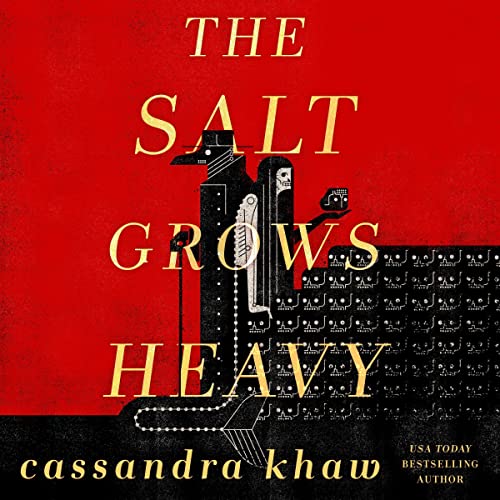 The Salt Grows Heavy by
The Salt Grows Heavy by 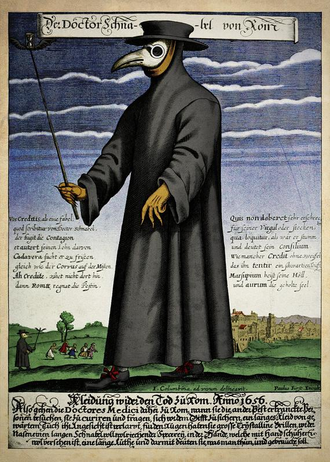
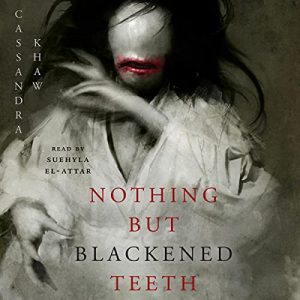 It wasn’t quite as cohesive a story as
It wasn’t quite as cohesive a story as 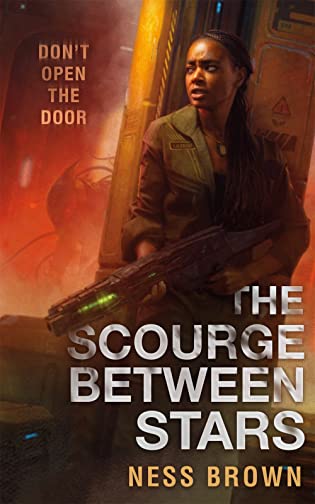 The Scourge Between Stars by
The Scourge Between Stars by  Escape Rating A-: Whether The Scourge Between Stars is science fiction or horror depends on which side of that divide the reader thinks the movie
Escape Rating A-: Whether The Scourge Between Stars is science fiction or horror depends on which side of that divide the reader thinks the movie 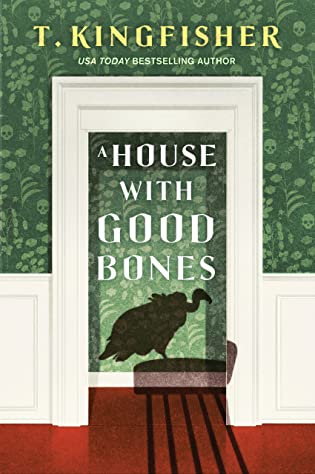 A House with Good Bones by
A House with Good Bones by 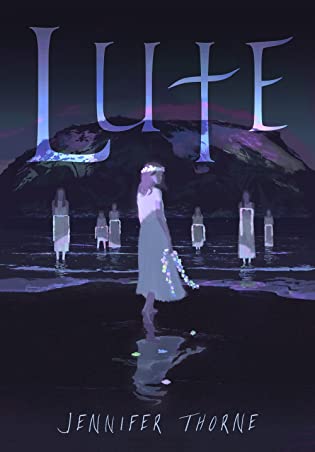 Lute by
Lute by 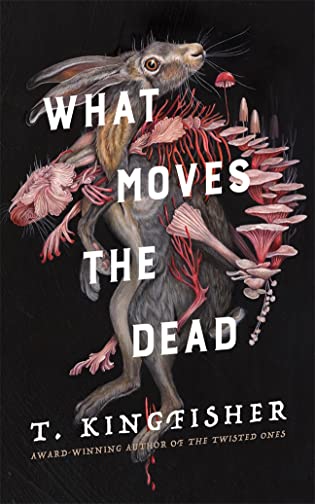 What Moves the Dead by
What Moves the Dead by